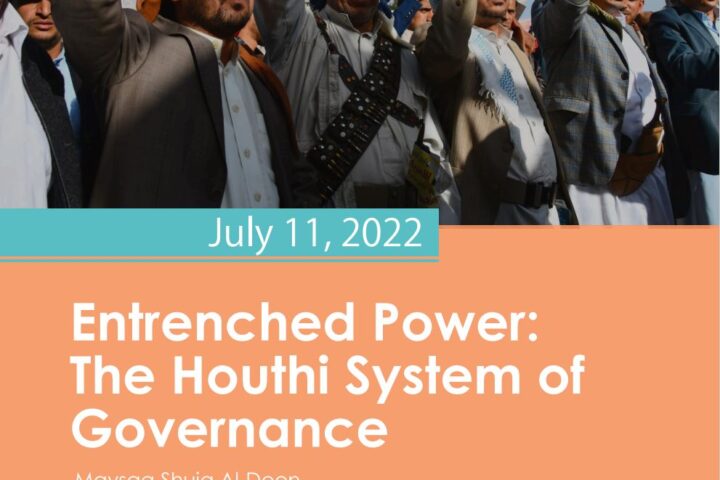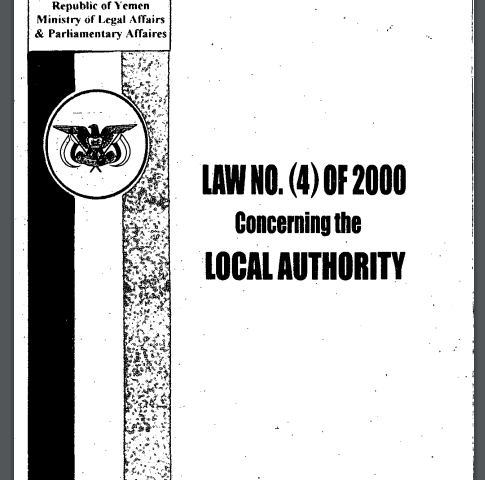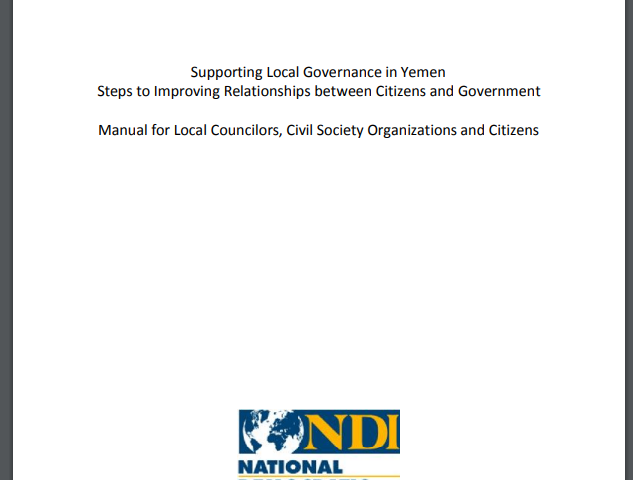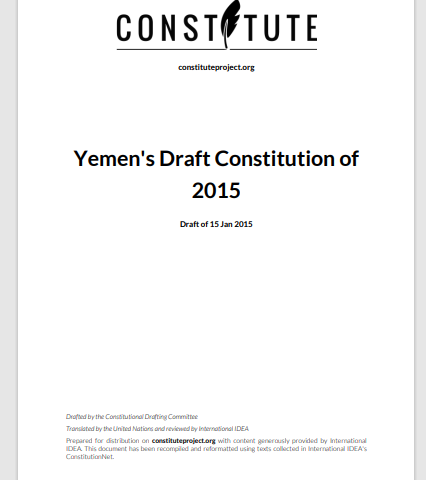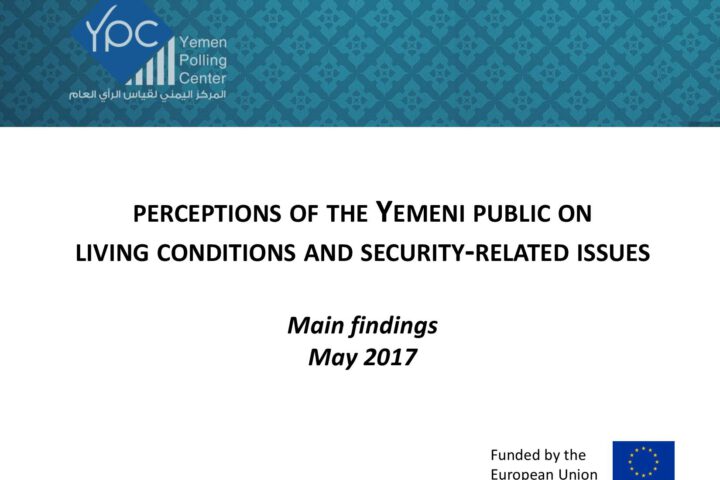The Governorate of Al-Mahweet is located 113 kilometers to the northwest of the capital Sana’a, between Sana’a and Al-Hodeidah governorates. It is divided into nine administrative districts, with Mahweet City as the capital.
Al-Mahweet governorate information
Map of Al-Mahweet
Economy
Agriculture is the main economic activity in the governorate, which produces about 2.2% of Yemen’s total agricultural production. Crops include cereals, cash crops, and fruits. The governorate also produces honey and is home to artisanal pottery, glass, marble, and granite production. There are a number of tourist attractions and historic landmarks, such as the cities of Shibam and Kawkaban.1https://www.yemenna.com/index.php?go=guide&op=show&link=mahweet.
In 2014, grants and central subsidies constituted 97% of the local authority’s budget, while local revenues accounted for 3%.2Please see the appendix for further information on these different types of revenue. The most significant local revenues were local shared revenues and taxes (most notably zakat), revenues from sales of goods and services, and fines and penalties. The war disrupted economic activity and decreased these revenues. As elsewhere in the north, the establishment of the General Zakat Authority and the transfer of zakat to central revenue caused the governorate to lose an important source of income.3Republic of Yemen, Ministry of Finance, Budget Sector: estimated local authority budget for the 2014 fiscal year.
In 2014, the poverty rate in Al-Mahweet was 60.7%.4Central Statistics Office of the Republic of Yemen, Household Budget Survey 2014. With the economic decline the governorate has been facing due to the war, this rate is likely to have risen sharply during the past few years.
Local governance
The local council of Al-Mahweet comprises 20 councilors and the governor. Currently, there are two vacant seats, one councilor left the country, and another passed away, so that the council currently comprises 16 members. The governorate’s leadership is working from the government offices of the local authority. Since the beginning of the war, the local council has been performing a limited role, with the governor and the vice-governor, who is also the secretary general of the local council, playing a far more active role in local governance. As in other areas under control of the de-facto authorities, the governorate supervisor is becoming increasingly important in local governance decisions.
The executive offices are present in the governorate, but are functioning at a minimum level due to the economic decline, reduction of local authority expenditure, and non-payment of salaries.5Interview with local authority leader in the Governorate of Al-Mahweet. March 2019.
Access to basic services
According to OCHA’s 2023 Humanitarian Needs Overview Yemen, there are nearly 590,000 people in need of assistance in Al-Mahweet, or approximately 71% of the population. Sixty-three percent of them are in dire need.6https://data.humdata.org/dataset/yemen-humanitarian-needs-overview, 2023 People in Need in Yemen The current IDP population of Al Mahwit is 40,000 (status December 2022).7Ibid.
Most hospitals and health centers in the governorate are still operational, but are reduced to providing services at a minimum level due to the absence of sufficient local and central funding. Health facilities now rely heavily on donor support, yet funding is very limited and the services provided are insufficient to meet the needs of the population. There are major constraints in terms of availability of equipment and medicine, especially for chronic illnesses.8Interview with local authority leader in Al-Mahweet. March 2019.
According to OCHA, 33 schools in the governorate were damaged by the war.9OCHA. An Overview of the Humanitarian Needs in Yemen 2018. Salaries of teachers are not being paid in Al-Mahweet.10Economic Studies and Forecast Sector in the Ministry of Planning and International Cooperation, the Economic and Social Development In Yemen Newsletter – Issue No.30, December 2017. As a result, most schools are operating at minimum capacity. During the 2019 school year, a UNICEF-supported stipend was instituted, with teachers paid 30,000 Yemeni Riyal (ca. $50) per month for 9 months. This has helped to keep more schools open.11Interview with local authority leader in Al-Mahweet. March 2019; https://www.unicef.org/mena/press-releases/us-70-million-unicef-support-education-programmes-yemen-through-monthly-cash.
The percentage of households in Al-Mahweet with access to potable water was 42% in 2016/17.12OCHA: Overview of the Humanitarian Needs in Yemen 2018The main public water project has been subject to continued disruptions due to lack of financial resources to cover the cost of fuel, maintenance, and salaries. Consequently, most water sources in the governorate are private and many inhabitants of Mahweet City now rely on private water supplies. The sewage network of Mahweet City is still functional. Periodic disruptions are redressed by the local executive office.13Interview with local authority leader in Al-Mahweet. March 2019.
Demographics
| District | Size (km2) | Population (Female) | Population (Male) | Population (Total) |
|---|---|---|---|---|
| Shibam Kawkaban | 399 | 29,758 | 31,271 | 61,028 |
| At Tawilah | 585 | 40,835 | 43,227 | 84,062 |
| Ar Rujum | 766 | 57,387 | 57,710 | 115,096 |
| Al Khabt | 641 | 51,908 | 51,333 | 103,240 |
| Milhan | 891 | 66,201 | 71,798 | 137,999 |
| Hufash | 379 | 29,945 | 30,492 | 60,437 |
| Bani Sa’d | 591 | 47,701 | 45,870 | 93,571 |
| Al Mahweet City | 202 | 14,895 | 17,396 | 32,292 |
| Al Mahweet | 506 | 41,265 | 41,929 | 83,194 |
| TOTAL | 2,328 | 379,894 | 391,026 | 770,920 |
Figures are based on the 2021 Humanitarian Needs Overview Yemen, OCHA. Population figures include the number of IDPs and residents.


